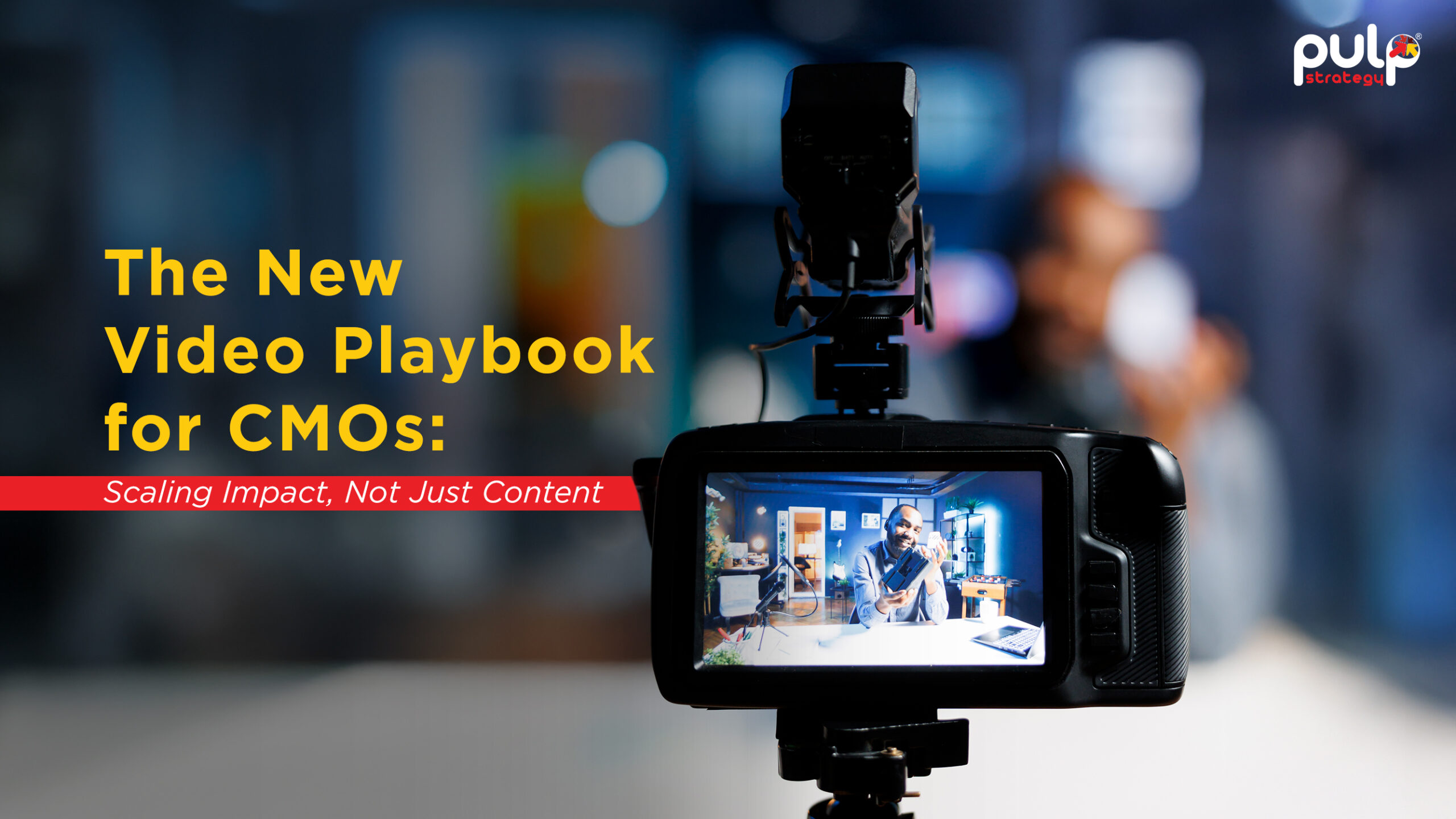Did you know that going green isn't just good for the planet, but a goldmine for your brand? In a world where brands are not just selling products but building a better future, sustainability can make that a reality.
A 2023 report found that 70% of global consumers are willing to pay a premium for sustainable products, and this trend is only expected to rise. Consumers today aren't just buying products; they're buying into a brand's values. This presents a unique opportunity for CMOs in the B2B space. By strategically incorporating sustainability into their marketing efforts, they can unlock a wider audience, build brand loyalty, and gain a competitive edge.
The Business Case for Sustainability

The conversation around sustainability in B2B goes beyond just reputation management. Businesses are increasingly recognizing the financial benefits of sustainable practices. Reports from organizations like highlight the cost-saving potential of resource efficiency and reduced waste. Studies show that millennials, a dominant demographic in the workforce, are more likely to work for companies with strong sustainability initiatives.
B2B Goes Green: Embedding Sustainability in Business Strategies
Forward-thinking B2B companies are integrating sustainability throughout their operations. This includes:
1. Sustainable Sourcing:
- Transparency in the supply chain: Work with suppliers to promote transparency in their operations. This allows you to identify and address potential sustainability risks.
- Reduce transportation emissions: Collaborate with suppliers to optimize logistics and source materials locally whenever possible.
2. Energy Efficiency:
- Invest in energy-efficient technologies: Modernize equipment and processes to reduce energy consumption. Explore renewable energy options like solar panels or wind power to further minimize your environmental footprint.
- Track and report energy use: Monitor your energy consumption and set realistic goals for reductions. Publicly reporting your progress demonstrates accountability.
3. Ethical Labor Practices:
- Adopt a strong code of conduct: Establish clear guidelines related to fair wages, safe working conditions, and worker rights throughout your supply chain.
- Empower whistle-blowers: Create safe channels for workers to report unethical practices without fear of retaliation.
4. Sustainable Product Lifecycles:
- Enable easy repair and refurbishment: Offer spare parts and repair manuals to extend the lifespan of your products.
- Design for recyclability: Use recyclable materials and incorporate design elements that facilitate easy disassembly and material recovery.
5. Community Involvement:
- Support initiatives that align with your sustainability goals: Partner with NGOs or industry groups working on environmental protection, social justice, or community development.
- Employee volunteer programs: Encourage employees to participate in volunteer activities that benefit the environment and local communities.
Challenges and Solutions for B2B CMOs: Navigating the Green Path
The growing importance of sustainability presents exciting opportunities for B2B. However, integrating sustainability into marketing strategies isn't without its hurdles. Here's a breakdown of two key challenges and how to overcome them:
Challenge 1: Greenwashing Concerns
Consumers and businesses are increasingly wary of misleading sustainability claims, a practice known as "greenwashing." Here's how to ensure transparency and avoid greenwashing pitfalls:
- Transparency throughout the supply chain: Be transparent about your entire supply chain. Highlight your efforts to work with sustainable suppliers and address potential environmental or social risks within your network.
- Authenticity in messaging: Craft genuine and relatable messaging that reflects your company's true sustainability efforts. Avoid generic claims and focus on the specific actions you're taking to be more sustainable.
Challenge 2: Metrics and Measurement
Quantifying the return on investment (ROI) of sustainability initiatives can be complex. Here's how to develop clear metrics and effectively communicate your results:
- Define measurable goals: Set SMART goals (Specific, Measurable, Achievable, Relevant, and Time-bound) for your sustainability initiatives. This allows you to track progress and demonstrate the impact of your efforts.
- Track relevant metrics: Choose metrics that align with your goals. This could include reduced energy consumption, waste diversion rates, or increased customer acquisition from sustainable product lines.
Beyond the Challenges: Integration is Key
Sustainability shouldn't be treated as a separate marketing campaign. Here's how to ensure seamless integration:
- Alignment with brand messaging: Ensure your sustainability efforts resonate with your overall brand identity and values. This creates a cohesive narrative that resonates with your target audience.
- Incorporate sustainability across campaigns: Integrate sustainability messaging into all your B2B marketing campaigns, from social media to trade shows. This reinforces your commitment and educates your audience about your sustainability journey.
How Do You Lead the Green Charge?

As a CMO, here are some ways to take the lead on sustainability:
1. Conduct a Sustainability Audit:
Before embarking on your sustainability journey, take stock of your company's current position. A comprehensive sustainability audit involves:
- Environmental Impact Assessment: Evaluate your company's environmental footprint, including energy consumption, water usage, waste generation, and greenhouse gas emissions. Analyze your company's labor practices, supply chain ethics, and commitment to diversity and inclusion.
- Strengths and Opportunities: Identify existing areas where your company excels in sustainability. This allows you to leverage these strengths in your marketing efforts. At the same time, pinpoint areas for improvement, setting the stage for future sustainability goals.
2. Develop a Sustainable Marketing Strategy:
With a clear understanding of your company's sustainability landscape, develop a strategic plan that outlines your approach to B2B green marketing. Here are key elements:
- Define Sustainability Goals: Establish clear, measurable goals aligned with your overall sustainability objectives. These goals could include reducing your carbon footprint by a specific percentage, increasing the use of recycled materials in your products, or achieving a specific sustainability certification within a timeframe.
- Identify Your Target Audience: Segment your B2B audience and understand their sustainability priorities. This allows you to tailor your messaging to resonate with their specific needs and values.
- Develop Key Sustainability Messaging: Craft clear, concise, and authentic messaging that reflects your company's sustainability efforts. Focus on the positive impact you're creating and avoid generic claims.
3. Integrate Sustainability into Content Marketing:
Content marketing offers a powerful platform to showcase your sustainability commitment. Here are some content ideas:
- Thought Leadership Articles: Publish thought leadership pieces that discuss sustainability trends in your industry, best practices for green business operations, and the benefits of sustainable solutions.
- Case Studies: Develop case studies that showcase how your sustainable products or services have helped customers achieve their own sustainability goals.
- Customer Testimonials: Feature testimonials from satisfied customers who value your company's commitment to sustainability.
- Interactive Content: Create quizzes, infographics, or interactive tools that educate your audience about sustainability and your company's role in it.
4. Leverage Data and Analytics:
Data is key to measuring the impact of your sustainability marketing efforts. Here's how to utilize data effectively:
- Track Key Performance Indicators (KPIs): Develop KPIs that align with your sustainability goals. This could include website traffic generated by sustainability content, leads acquired through sustainable product campaigns, or brand sentiment analysis related to your sustainability efforts.
Regular Reporting and Analysis: Regularly monitor your KPIs and analyze the data to understand what's working and what needs improvement. Track progress towards your sustainability goals and share the results with stakeholders to demonstrate the ROI of your marketing efforts.
Acting on Sustainability: How to Avoid Greenwashing Accusations
Greenwashing is a big concern for businesses these days, especially in the B2B space where reputation is paramount. Here are some things B2B companies in APAC can do to avoid accusations of greenwashing in 2024:
- Transparency and authenticity: Be upfront about your sustainability efforts, both the successes and the challenges. Don't make misleading claims or try to present yourself as perfect. Focus on what you are doing and how it is making a difference.
- Data-driven approach: Back up your sustainability claims with data and evidence. This could include things like lifecycle assessments, certifications, and third-party verification.
- Focus on real action: Don't just talk about sustainability, take concrete action. This could include things like investing in renewable energy, reducing waste, or developing more sustainable products and services.
- Stakeholder engagement: Involve your stakeholders, such as customers, suppliers, and employees, in your sustainability efforts. This will help to ensure that your efforts are aligned with their values and expectations.
- Continuous improvement: Sustainability is a journey, not a destination. Be committed to continuous improvement and set ambitious but achievable goals.
The Road Ahead: Leading the Sustainable B2B Charge
The tide is turning, and B2B companies that embrace sustainability will be the ones navigating the future with confidence. You have the power to position your brand as a leader in this critical movement. Here's a roadmap to guide you on the path to leading the sustainable B2B charge:
1. Conduct a Sustainability Audit:
This is the foundation for your journey. A comprehensive sustainability audit provides a clear picture of your company's current environmental and social impact. Here's what to consider:
- Environmental Footprint: Evaluate energy consumption, water usage, waste generation, and greenhouse gas emissions across your operations.
- Social Responsibility Audit: Analyze your company's commitment to fair labor practices, diversity and inclusion, and community engagement.
2. Set Clear Sustainability Goals:
With a clear understanding of your baseline, establish specific and measurable goals. These goals will serve as a roadmap and guide your sustainability efforts.
- Align with Overall Strategy: Ensure your sustainability goals align with your company's long-term business strategy. This creates a cohesive and impactful approach.
- Phased Approach: Consider a phased approach with short-term and long-term goals. Celebrate achievable milestones while keeping your long-term vision in focus.
3. Partner with Internal Stakeholders:
Sustainability isn't a solo endeavor. To achieve significant change, collaboration is key. Partner with internal stakeholders across departments:
- Operations and Supply Chain: Collaborate with these teams to identify opportunities for energy efficiency, resource reduction, and responsible sourcing.
- Product Development: Work together to design and develop sustainable products with a focus on longevity and recyclability.
- Finance: Secure budget allocation for sustainability initiatives and demonstrate the potential cost-savings and competitive advantages.
4. Communicate Effectively: Tell Your Sustainability Story
Transparency and clear communication are critical for building trust and buy-in. Here's how to effectively share your sustainability story:
- Multi-Channel Approach: Utilize various communication channels, including your website, social media, sustainability reports, and presentations.
- Data-Driven Communication: Back up your sustainability efforts with data and metrics that showcase the positive impact you're creating.
Live APAC Successes for Taking the Greener Route

Here are some successful examples of B2B companies that have embraced sustainability and achieved positive results:
- Tesla: Tesla's focus on electric vehicles and clean energy solutions has revolutionized the transportation sector. By promoting sustainable transportation, Tesla has not only disrupted a major industry but has also captured the imagination of consumers and businesses alike.
- IBM: A tech giant, IBM has been a leader in corporate social responsibility for decades. Their sustainability efforts encompass energy efficiency in data centers, green procurement practices, and responsible waste management. This commitment to sustainability has not only benefited the environment but has also helped IBM attract and retain top talent.
- Unilever: Unilever implemented its Unilever Sustainable Living Plan, focusing on reducing environmental impact and promoting social responsibility throughout its supply chain. This focus on sustainability has not only improved their environmental footprint but has also helped Unilever build brand loyalty and enhance its reputation.
Sustainability is no longer a peripheral concern; it's a strategic imperative. By embracing this green wave, B2B CMOs can build stronger brands, attract new customers, and future-proof their businesses for a sustainable tomorrow.







